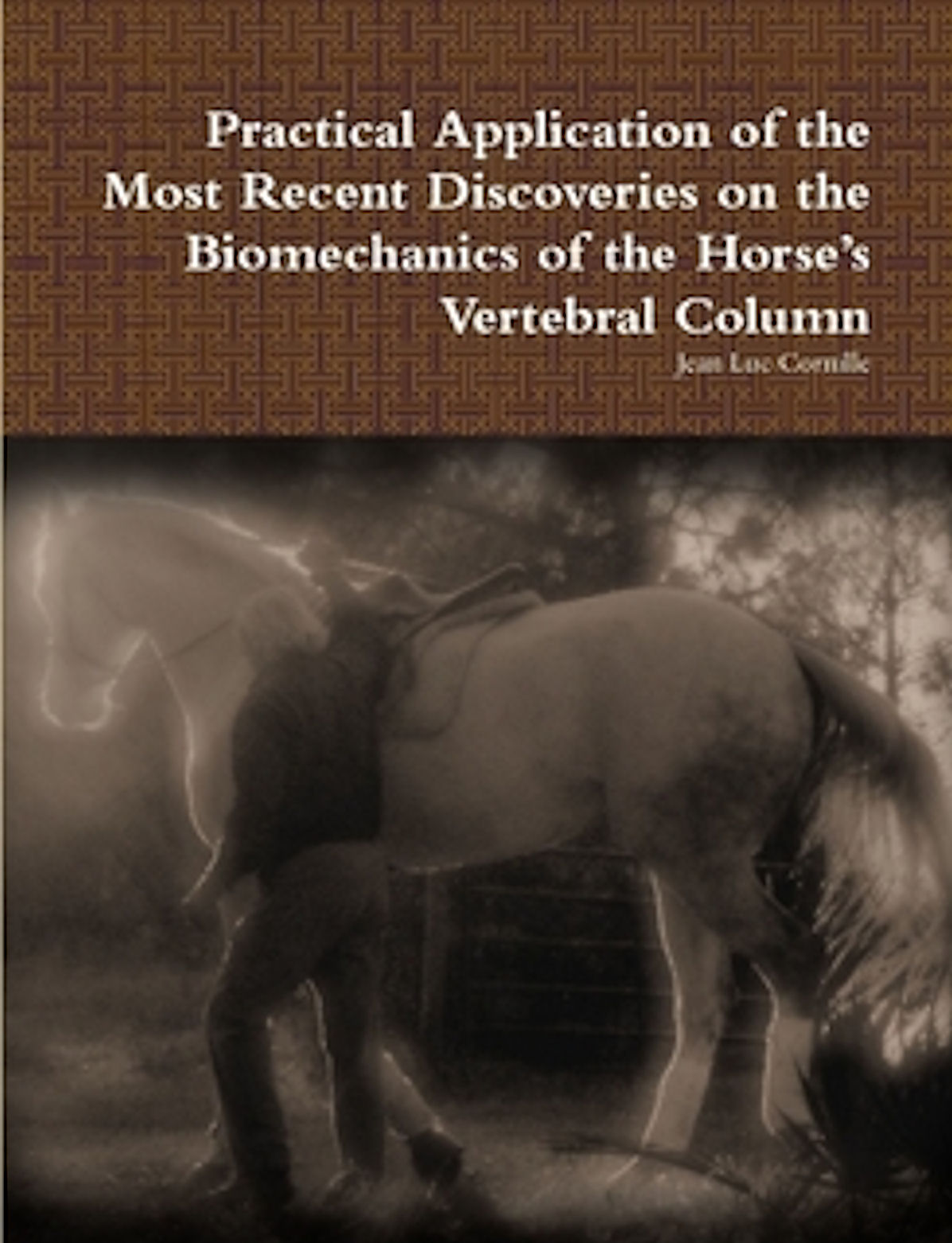This book pulled me in right from the beginning.
"Equestrian Education and veterinary approaches regard the horse's vertebral column as secondary to the legs. Principles of riding emphasize flexing the horse's spine through greater engagement of the hind legs and/or lowering of the neck. In the line of thought that back soreness is only the compensation for hock pain, equine practitioners are treating back pain by injecting the hocks.”
And from then on I found that The Science of Motion (and Jean Luc Cornille) has presented a greatly advanced text with regard to the movement of the equine spinal column, rider influence on such and how to bring the two together to produce true balance and harmony.
No longer can we accept that the hind limbs generate flexion of the spine, nor does lowering of the neck. In fact the well-illustrated graphics clearly demonstrate that the spine of the horse has very limited flexion but instead reacts to and generates movement through minute and complex rotations. These rotations occur, as the horse travels, in response to many forces – gravity, rider weight and interference as well as signals from the brain. The many tendons, ligaments and muscles that connect the vertebral column act together in a finely orchestrated symphony of contractions, releases and stabilizers all with the same purpose – to maintain the integrity of the spine.
Through the easy to read graphics of both the equine and human spine it becomes quite clear that a driving seat does nothing to enhance the horse's balance and performance. The more movement created by the rider the stiffer the back muscles become. Also in the lowering of the neck we find the force created on the spine, again, creates a stiffening reaction in the musculature of the back. With the help of computerized sensors we find that we sit on the point of the horse's back that most greatly disturbs their balance – the area that must contend with the most vertical force. Cornille explains that at first thought this appears to be a problem but instead shows that this, then, is where the rider can exert the most influence. The sort of influence is then brought into question.
As we continue into the explanation we are again aided by the sensors. The rider must maintain a stable vertebral column so as not to disturb the vertebral column of the horse. There should be no back and forth movement nor should there be any jumping up and down. We work through how to achieve this stability as well as an understanding of what happens in the horse if we fail to do so. Once achieved we then find that the horse's brain does more to control movement than most have realized.
Many modern scientific studies are incorporated into the text as well as the examination of some traditional masters' approaches to their body positions and system of aids. We find factual reasons for our approach to riding and we (finally) have definitive proof about the limited ability of the back to flex, round or otherwise actively react to our aids – except of course to protect itself from our erroneous influence.
The book is a must have for all riders that are interested in the welfare of their horse as well as those that wish to achieve true harmony between horse and rider.









